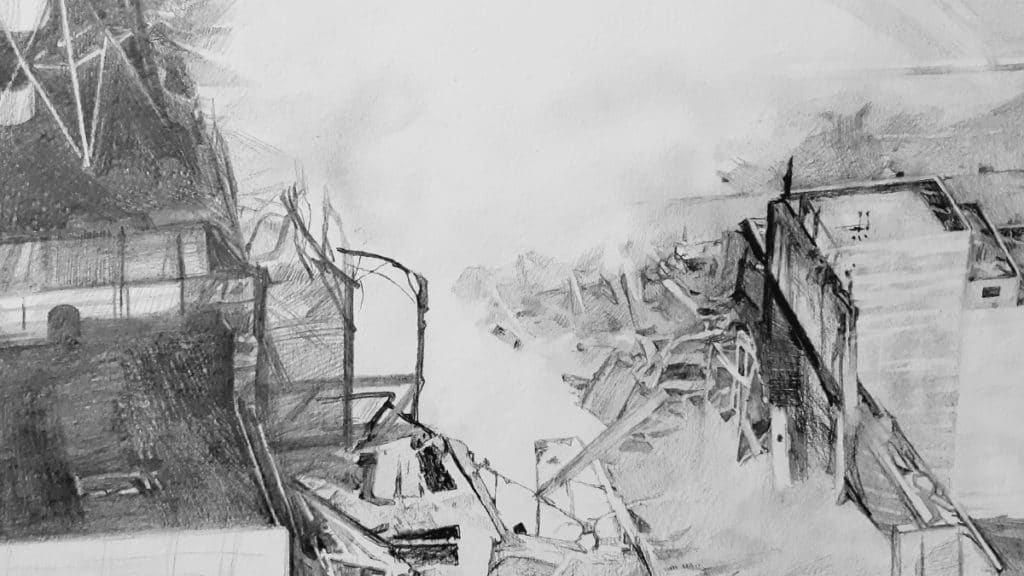
Those who read the works of the writer Nikolai Cherkashin probably know that in one of his books he describes the accident that occurred in the Pacific Fleet on a nuclear submarine. The incident occurred a year before the disaster at the Chernobyl nuclear power plant. Nikolay Cherkashin, not without reason, believes that if this tragic incident had not been classified by all possible means, then Chernobyl would most likely have been avoided.
August 1985. Thirty years have passed since the bombing of the Japanese city of Hiroshima. Chazhma Pacific Bay became the next victim of the atom: 11 dead, hundreds irradiated with radiation, radioactive contamination of the environment. According to the latest data, about 950 people were affected.
If we analyze only this accident, we can quite objectively identify all the mistakes that led to the deaths of people, the exposure of many officers and workers, and prevent such accidents in the future. But this was not destined to happen…
- The first mistake
The K-431 nuclear submarine came to Chazhma Bay with the aim of replenishing the atomic fuel reserves, while initially violating technical requirements, becoming very close to a submarine of this type and a floating dosimetric station, instead of getting up as safety standards require – at a separate pier.
- The second mistake
During the reloading of the active zones of the nuclear submarine reactors, a torpedo boat passed by at full speed, raising a large wave. The boat personnel did not notice, or pretended not to notice the signal prohibiting fast movement.
- The third mistake
The compensating grid of the reactor was raised as a result of the large wave, as well as due to the distortion of the left-side reactor cover. A thermal explosion, as a result of a nuclear chain reaction, became inevitable. The radiation level was about 90,000 x-rays per hour at the center of the explosion.
The outcome of the tragedy
An inevitable tragedy occurred at the shipyard № 30 in Chazhma Bay due to the release of a huge amount of energy, which led to a thermal explosion. The entire crew of the K-431 nuclear-powered ship was killed, 96 people received severe forms of radiation exposure. The PM-133 floating workshop, the K-42 torpedo nuclear submarine, and the diesel submarine, standing near K-431, that suffered from radioactive contamination were put out of order and eventually disposed of as nuclear waste.
Various kinds of objects and debris fell on the nuclear-powered reactor during the explosion. They fell at the shipyard, directly into the water, and so on. By the wind, radioactive objects spread through the hills, which radically aggravated the situation.
Extinguishing the direct fire resulting from the explosion lasted about three hours. It was not professional firefighters who engaged in its liquidation, but employees of the ship repair enterprise, as well as submarine crews, who were at that time in the bay. It should be borne in mind that, of course, they did not have any special clothing or special equipment.
Then, rescue and cleaning work continued for several weeks in a row. They were attended by construction teams, chemical service specialists, personnel of the radiation safety teams of the Pacific Fleet. About two hundred people did everything daily to minimize the consequences of the tragedy in the shortest possible time.
Many liquidators could not avoid the terrible burns with blisters scattered throughout the body. The radiation dose of the victims exceeded all permissible standards. And although many military men after suffering severe radiation sickness and a long period of rehabilitation nevertheless returned to service, this does not justify the negligence of those who allowed this accident when replacing nuclear fuel of an atomic ship.
Information blockade
The catastrophe in the Chazhma Bay was immediately classified. The information blockade hung not only over the workers’ village. The access control regime was strengthened at the shipyard; the village’s communication with the outside world was paralyzed. However, no preventative or explanatory measures were taken.
The population, being in ignorance, received a high dose of radiation exposure. The command of the Pacific Fleet kept in secret the reasons for the accident in Chazhma Bay not only from personnel working at nuclear power plants, but also from the public, primarily international.
Cherkashin emphasizes in his book that if conclusions had been drawn from this tragedy, it would probably have been possible to prevent the terrible catastrophe in Chernobyl that occurred a year later, in April 1986 at the Chernobyl nuclear power plant. To this day, there is a rather complicated radiation situation in Chazhma Bay.
According to environmentalists, it’s quite difficult to predict what other negative consequences can result from negligence committed more than thirty years ago. The Pacific counterpart of Chernobyl remained a mystery for a very long time. The accident was carefully hidden from most of the inhabitants of the planet, not suspecting that in a hidden form it would become an overture to one of the worst tragedies of the 20th century – the accident at the Chernobyl nuclear power plant.
Obviously, the state’s priority was focused not on people’s safety, but on ostentatious well-being in the nuclear industry, especially when it touched the point of view of the international community.